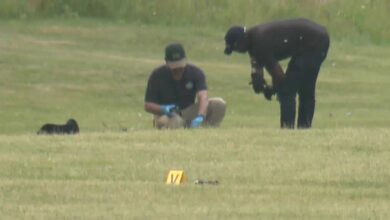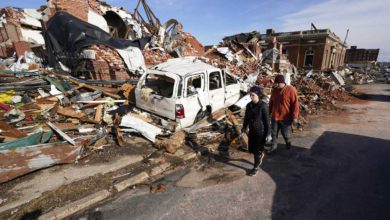
It's called a "silent killer." Carbon monoxide is a gas that is odorless, colorless and tasteless.Last week's scare at Miami University has opened a lot of eyes to the importance of having a CO detector.Michael Shock is the Miami student who had a personal CO detector in his dorm room."Fortunately, it was a pretty important part in saving a lot of lives," Shock said. Shock said his mother deserves the credit for him having one."It's something I always had with me, everywhere I went that wasn't our house because of a story of a family who went on vacation, and unfortunately, they all passed away in a hotel because they didn't have carbon monoxide detectors. So, ever since then, she made me take it on vacation or any foreign place that I'm staying," Shock said.Shock said his roommate messaged him Thursday afternoon from their dorm room at Hillcrest Hall."He sent me a message while I was in class saying, 'Hey, I feel like I'm about to pass out, make sure when you come back, leave the window open,'" Shock said.Shock said his personal CO detector in the room then started going off.They alerted authorities. By the time Shock got to the room, the building was being evacuated."We were running through banging on doors, yelling at people to get out," Shock said. In total, 250 people were forced from their dorm rooms overnight.One student, Jacob Maten, was taken to the hospital with suspected CO poisoning. Shock's roommate was checked out by paramedics on the scene."I know after he evacuated the building with me, he went into an ambulance. They checked him and they told him just to get fresh air for a while. He had a little bit of carbon monoxide in his system, but he would be ok," Shock said. Miami University said the source of the carbon monoxide was ultimately identified as exhaust from a hot water heater that is used to heat the water for showers and faucets. University officials said, under some conditions, the exhaust was pulled back into the building from outside through small openings in the structure of the building, which have been repaired. Officials said they installed temporary carbon monoxide detectors in Hillcrest Hall, and in an abundance of caution, are determining how best to install them in all halls as a permanent system.
It's called a "silent killer." Carbon monoxide is a gas that is odorless, colorless and tasteless.
Last week's scare at Miami University has opened a lot of eyes to the importance of having a CO detector.
Michael Shock is the Miami student who had a personal CO detector in his dorm room.
"Fortunately, it was a pretty important part in saving a lot of lives," Shock said.
Shock said his mother deserves the credit for him having one.
"It's something I always had with me, everywhere I went that wasn't our house because of a story of a family who went on vacation, and unfortunately, they all passed away in a hotel because they didn't have carbon monoxide detectors. So, ever since then, she made me take it on vacation or any foreign place that I'm staying," Shock said.
Shock said his roommate messaged him Thursday afternoon from their dorm room at Hillcrest Hall.
"He sent me a message while I was in class saying, 'Hey, I feel like I'm about to pass out, make sure when you come back, leave the window open,'" Shock said.
Shock said his personal CO detector in the room then started going off.
They alerted authorities. By the time Shock got to the room, the building was being evacuated.
"We were running through banging on doors, yelling at people to get out," Shock said.
In total, 250 people were forced from their dorm rooms overnight.
One student, Jacob Maten, was taken to the hospital with suspected CO poisoning. Shock's roommate was checked out by paramedics on the scene.
"I know after he evacuated the building with me, he went into an ambulance. They checked him and they told him just to get fresh air for a while. He had a little bit of carbon monoxide in his system, but he would be ok," Shock said.
Miami University said the source of the carbon monoxide was ultimately identified as exhaust from a hot water heater that is used to heat the water for showers and faucets. University officials said, under some conditions, the exhaust was pulled back into the building from outside through small openings in the structure of the building, which have been repaired.
Officials said they installed temporary carbon monoxide detectors in Hillcrest Hall, and in an abundance of caution, are determining how best to install them in all halls as a permanent system.
Source link








